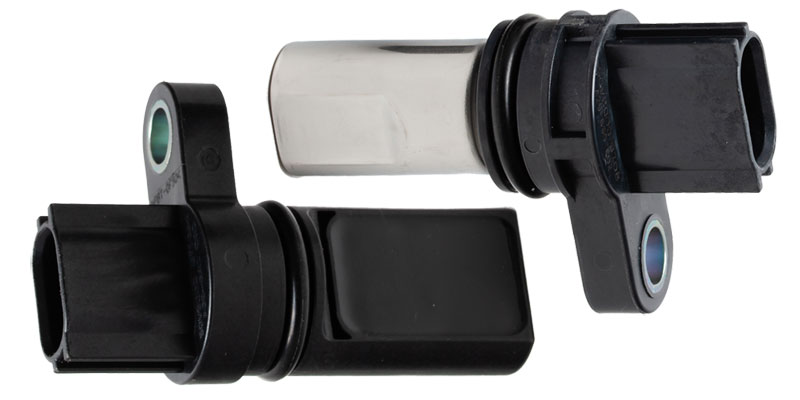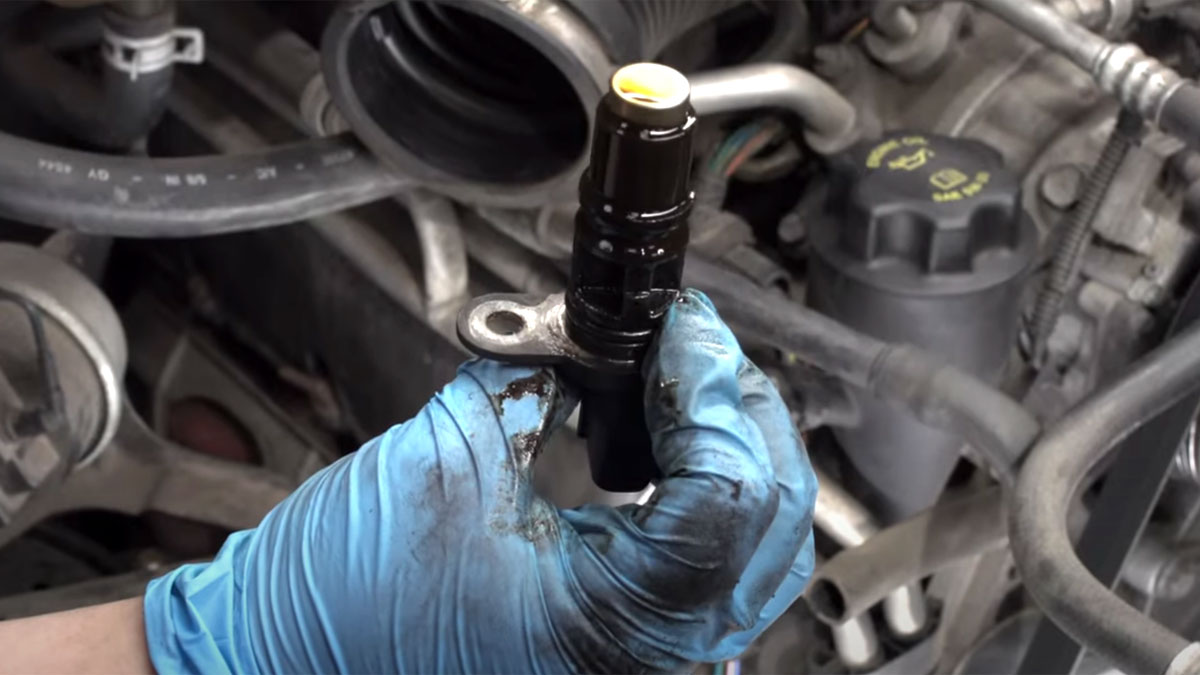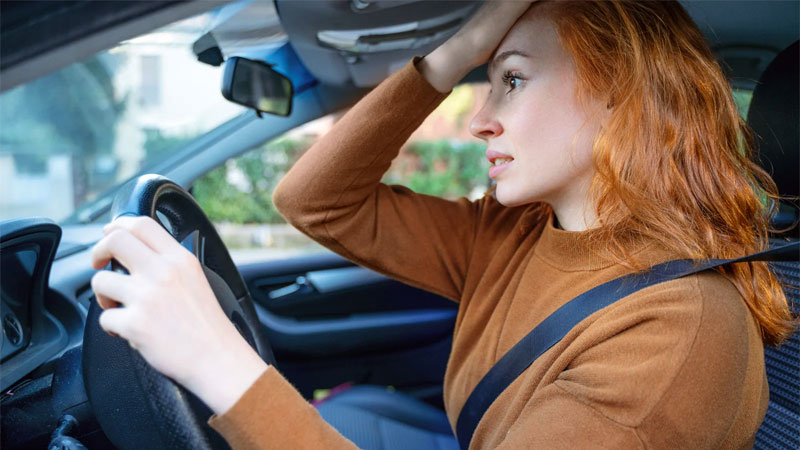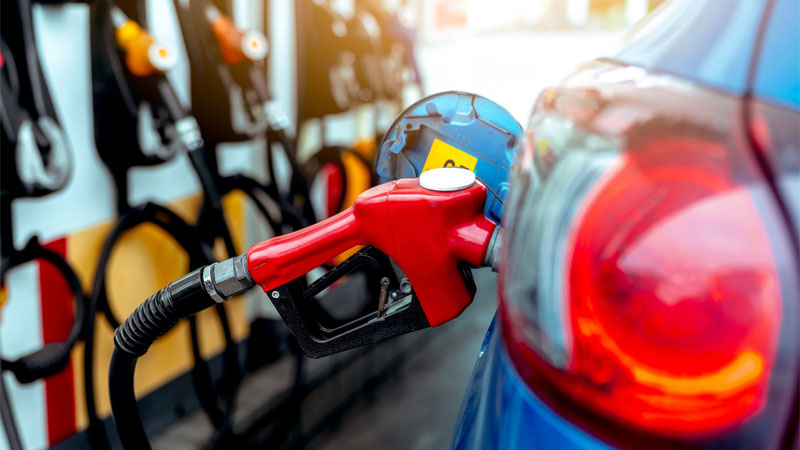Today’s internal combustion engines are far more equipped to sustain consistent operation than engines of yesteryear. Most notably, modern internal combustion engines come equipped with a host of specialty control modules, sensors, and intelligent devices, allowing them to adjust key operating criteria on the fly.
Of all sensors found on today’s engines, few are as important as those which relate to engine timing. One such sensor is the Camshaft Position Sensor.
This particular sensor provides accurate feedback regarding the precise position of an engine’s rotating assemblies. This feedback is often compared to that provided by a vehicle’s Crankshaft Position Sensor.
Unfortunately, like any electrical device, an engine’s camshaft position sensor is prone to occasional malfunction and failure. When this occurs, a host of secondary symptoms often arise, some of which tend to be relatively severe in nature. Recognizing these symptoms often proves key when attempting to quickly remedy the issue at hand.
Read on to learn more about the various symptoms associated with a faulty camshaft position sensor, as well as how to handle such a situation, should it arise in the future.
See Also – How Does a Boxer Engine Work?
What Is a Camshaft Position Sensor?

A camshaft position sensor (CMP) is a specialty device that records and relays information to a vehicle’s ECM/PCM, regarding the actual position of an engine’s camshaft when in rotation.
Consequently, this information proves vital in determining the overall position of each intake and exhaust valve found in both engine banks, due to the fact that cam/valve timing correlates through the use of lifters/pushrods.
The timing of an engine’s ignition system and fuel injectors tends to be highly reliant upon camshaft timing as a whole. Without such feedback, it would be nearly impossible to accurately regulate injector pulse timing or spark advance.
Additionally, the implementation of such technology as variable valve timing between bank 1 and bank 2 of a particular engine would be little more than a pipe dream.
The camshaft position sensor itself operates on the principle of magnetism, picking up its signal from a tone ring positioned at one end of the camshaft position sensor.
As a camshaft spins, and the teeth of this tone-ring pass in front of the camshaft position sensor itself, a waveform signal is created, thereby providing feedback to an engine’s management software.
Where Is the Sensor Located?
The exact position of an engine’s camshaft position sensor differs from one vehicle to the next. The sensor in some engines is bolted directly to a port within the unit’s front timing cover. Alternatively, on other vehicles, this sensor is bolted to an engine’s valve cover or cylinder head.
If in doubt as to the exact position of your vehicle’s camshaft position sensor, secure and consult a copy of the factory-specific service and repair manual for your particular vehicle.
Bad Camshaft Position Sensor Symptoms
A faulty Camshaft Position Sensor can produce a number of secondary symptoms, some of which tend to be relatively troubling in nature. Learning to recognize these symptoms can be invaluable when attempting to diagnose an issue of this type.
The following are several of the most prominent issues associated with a faulty or failing Camshaft Position Sensor.
1. Illuminated Check Engine Light
In most cases, a faulty camshaft position sensor will cause a vehicle’s check engine light to illuminate. This occurs when one or more timing-related diagnostic trouble codes are logged by a vehicle’s PCM.
See Also – What Does a Flashing Check Engine Light Mean?
2. Starting Difficulties
Some vehicles will not start without a viable timing signal from an engine’s camshaft position sensor. When this occurs, a vehicle might only start Intermittently, or fail to start altogether.
3. Stalling
Just like in the example above, some vehicles require an accurate camshaft position sensor signal to sustain the operation. When this signal is lost, even momentarily, engine stalling will likely result.
4. Erratic Idle
When a vehicle’s camshaft position sensor first begins to fail, one might notice that the engine idles in an erratic fashion. This stems from the relative inaccuracy of any signal data being presented to the vehicle’s ECM/PCM.
5. Hesitation/Loss Of Power
As a vehicle’s camshaft position sensor begins to fail, one might also notice that the engine seems to be low on power, acts as if it hesitates under load, or even lurches or jerks under acceleration. This occurs when inaccurate or insufficient feedback is supplied to an engine’s ECM/PCM.
6. Reduced Fuel Economy
Today’s internal combustion engines require accurate feedback from their corresponding camshaft position sensor to facilitate efficient fuel delivery and spark timing. As the sensor begins to fail, fuel is often consumed excessively, causing a noticeable reduction in fuel economy, accompanied by an increase in exhaust odor.
7. Failed Emissions Test
For much the same reason as that described above, a failing camshaft position sensor can actually cause a vehicle to fail state-mandated emissions testing. Overfeeding, even for short periods of time, can cause overly-rich exhaust emissions.
What Causes the Sensor to Fail?
A vehicle’s camshaft position sensor can go bad for a number of reasons. One of the most prominent of these reasons is exposure to prolonged periods of extreme heat. This explains the higher than normal occurrence of camshaft position sensor failure directly following instances of engine overheating.
Contamination from oil, coolant, or other chemicals can also be responsible for premature fatigue and failure. This contamination can find its way into a sensor’s wiring receptacle, or alternatively, onto any related wiring itself. In turn, this can cause the breakdown of the insulation material that protects the circuit’s wiring.
Occasionally, this sensor might also become damaged due to impact, from roadway debris. This tends to be more common with timing cover-mounted camshaft position sensors, which can be struck by debris, if not protected by a suitable undercover.
Does the Camshaft Position Sensor Have a Fuse?
Depending upon the vehicle in question, you might find that your vehicle’s camshaft position sensor is supplied power via a fused circuit.
In such instances, it is important to ensure that this fuse has continuity, before attempting to delve further into a camshaft position sensor-related fault. In many cases, this fuse can simply be replaced, though further diagnosis will be required to isolate the cause of this blown fuse.
Alternatively, some sensors derive their input voltage directly from a vehicle’s PCM. Under such circumstances, simply replacing one or more fuses will prove insufficient when attempting to restore functionality. Further diagnosis will be required to isolate the issue at hand.
Can You Drive With a Bad Cam Sensor?
Driving with a bad camshaft position sensor is never advised, unless absolutely essential to reach a safe destination for repair. This stems from the substantial array of drivability-related symptoms that often accompany such a failure.
Attempting to drive in this manner can very possibly leave one stranded on the side of the road with little recourse.
In any event, a faulty sensor should be replaced at the first available opportunity. Doing so prevents further hardship, as the condition of the camshaft sensor in question only continues to deteriorate. If you do not feel comfortable tackling such repairs yourself, an appointment should be made with a trusted service center as soon as possible.
Camshaft Position Sensor Replacement Cost
The exact cost associated with camshaft position sensor replacement varies from one particular make and model of vehicle to the next. This stems from notable differences in parts costs, labor costs, and labor hours required to complete such repairs.
Nonetheless, the cost associated with repairs of this nature tends to fall within a definable range.
On average, one can expect to pay between $100-$250 to have their vehicle’s camshaft position sensor replaced. Roughly $30-$120 dollars will go toward the purchase of a replacement sensor itself, while installation-related labor will account for another $70-$130. In certain cases, additional shop supply charges might be incurred.
See Also – Timing Belt Replacement Interval
Can You Replace a Cam Sensor Yourself?
Those with a little mechanical know-how and a few basic hand tools can change out their engine’s camshaft position sensor with little issue. However, there are a few key tips and tricks to keep in mind when conducting any such repairs.
It is important to be careful when removing any hold-down screws or bolts that retain the part in place. Inadvertently breaking these fasteners off turns a repair of this type into a much larger affair.
It is also worth mentioning that one should be gentle when pulling the sensor from its bore. If seized, one should saturate the area with penetrating oil, before gently twisting the body of the sensor itself.
- History of the Chevrolet SSR: The Retro-Styled Convertible Pickup - Apr 25, 2024
- The History of the BMW M Coupe (the “Clown Shoe”) - Mar 26, 2024
- The History of the Ford Flex - Feb 28, 2024







If I replaced a camshaft position sensor b circuit range performance Bank 1 on a 2014 Chevy Cruze and I’m having problems again. Could it be the starter they took it off and put it back on and when I got back in the car after fixed started the car and I kept starting what that mean doing it didn’t have any problem until one day it I started it and it kept starting in the engine light come on in the cold come up p0366 could it be the starter or they took it off and put it back on?
Ran a diagnostic test it came up PO 344 Cam Shaft Position Sensor. Replaced and thought it was fixed, BUT it started hesitating again?